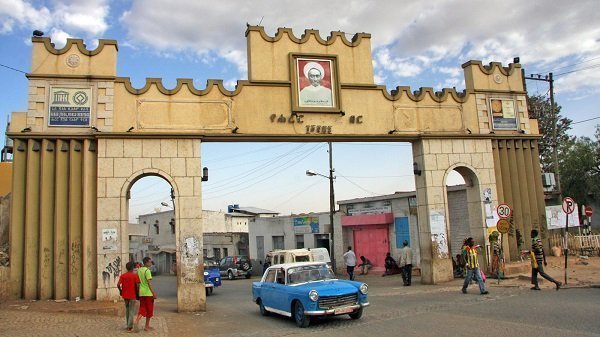
borkena
January 6, 2019
Harar is the spiritual centre of Ethiopia’s Muslim community, the fourth most important Islamic city in the world and a UNESCO World Heritage site. This walled city is reached via road from Dire Dawa, in the dry, eastern part of Ethiopia.The road climbs from the plains through low hills dotted with houses painted dusky pink or green.The land is lush, the fields yielding coffee, mangoes and maize.
Finally, Harar appears, with its old stone arched gates and thick city walls reminiscent of the medinas of Morocco.For centuries it flourished with Islamic scholars and traders, attracting some notable characters in its time: Evelyn Waugh and the French poet Arthur Rimbaud, as well as the 19th Century explorer Richard Burton who likened it to Timbuktu.
Harar today,still holds appeal for the romantic adventurer.The old city is a place of winding alleyways with walls in whitewash or dusky pink; a Muslim island blown inland far from the paths of the Arab Dhows of the Indian Ocean.
The old city is a powerful place for the senses, with its uneven alleyways leading the visitor past shrines, mosques and painted doors.Women wear layered skirts dyed in bright colours. with scarves of yellow or cerise twisted around their heads like warriors.
In the market, Somalis brush robes with people of the Amhara, Afar, and Oromo people.The air smells of the over-ripe mangoes that burst open on the ground.Coffee and cloth are on sale; possibly even bullets and Kalashnikovs in the dark back rooms.
The serious business is the trading of the mildly narcotic leaves of quat which is exported to Djibouti, Somalia and Yemen.
Things to see
Harar’s atmosphere is the main draw: appreciate this by rambling through alone –it’s small enough not to get completely lost.Taking a guide will allow you to see the important shrines and religious sites, all surrounded by the ancient walls and the gates that kept invading armies at bay. 99 minarets punctuate the sky – visible from some hotel rooftops.
Otherwise there are several points of interest that make it worth a few days here.
Arthur Rimbaud’s House
Formerly the house of an Indian merchant, this grand building is striking from both inside and out thanks to its wooden carvings and stained glass windows.It’s unlikely that Rimbaud ever actually lived here (details of his actual residence are unclear),however it’s a fitting dwelling for his memory which speaks of wealth, exoticism and a life of abandonment.
The photographic details portray some of Rimbaud’s life and chronical the history of Harar.Serious enthusiasts of Rimbaud should consider getting hold of a copy of Somebody Else by Charles Nicholl which gives details of his time in Africa.
Incidentally,Rimbaud apparently failed to write any poetry during his 10 years in the city.
Sherif Harari City Museum
Set in a double-storied mansion this excellent museum houses a superb private collection of antique Islamic manuscripts, textiles, coins, jewellery and weaponry from the Harari, Oromo, Amhara, Gurage, Somali and Argobba ethnic groups as well as music recordings.
Traditional Harari House
Entered via a traditional carved wooden door,the houses have a split-level interior and are regarded by UNESCO as one of the most important features of the city’s heritage.
The houses are centred on a living room with walls hung with household items,notably the circular flat polychrome basket.Floors are painted red to symbolise the blood split in protecting the city in the past.
A handful of these houses now offer visitors the chance to experience traditional Harari living as a homestay or guesthouse.
Hyenas
Hararis have a strange relationship with these dangerous predators.A nightly spectacle takes place at two locations outside the city gates when the hyena feeders pass food directly to the animals by hand and even invite them to take food from their mouths.
The origins of this spectacle are blurred.Some books claim that the nightly feeding of the animals has existed for only about fifty years in response to the influx of tourists.The more exotic version dates the ritual back to the famines of the nineteenth century when the hyenas were given meat in order to deter them from carrying off Hararis weakened by hunger.
The city walls were built with a series of holes especially for the hyenas. At night, the hyenas crept in,to lick the city streets clean.
Whatever the legend,seeing these vicious animals in close proximity at night,is quite a sight.
Getting there and away
Ethiopian Airlines fly from Addis to Dire Dawa. By road from Addis,the journey is approximately 12 hours.
A new train line has replaced the old metre gauge line from Addis to Djibouti via Dire Dawa.See www.seat61.com/Ethiopia.htm for details.
Claire A Davies @dispatchesfrom1
By same author : Bahir Dar: Ethiopia’s lakeside resort
Join the conversation. Like borkena on Facebook and get Ethiopian News updates regularly. As well, you may get Ethiopia News by following us on twitter @zborkena